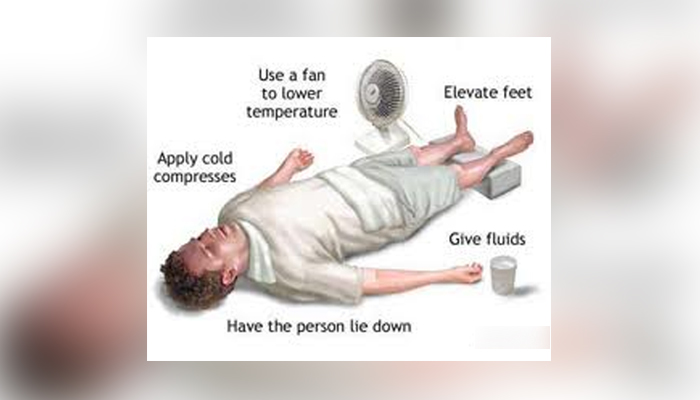Heatwave in Karachi: A doctor's guide on how to beat the heat
As the mercury soars past 40 degrees, here are a few tips you can follow to stay safe from heatstroke
October 13, 2020

The Pakistan Meteorological Department, issuing a heatwave alert for Karachi, has warned citizens against venturing out unnecessarily during the next week or so, especially during peak hours when a person is most exposed to the sun.
The Met department on Sunday had said that the heatwave would prevail over the city during the next six to eight days with the temperature rising to 40-42°C during the daytime.
Keeping in mind the danger that a heatwave poses, here are a few things Dr Daniyal Raza, working at Indus Hospital's emergency ward, recommends you do to beat the heat:
Avoid unnecessary outdoor visits in the day
The heat is at its peak between the times when the sun gains complete reign of the skies — around 10am — and when it starts skirting the boundaries — after 4pm.
In light of this, it’s advised to not go out during these five hours to make sure you stay safe from heatstroke.
Hydrate and eat fruits
Hydration during the hot months is imperative. You should carry a bottle of water or drink juices to avoid dehydration. You can also add fresh fruits to your water.
Try to eat sweet and ripe summer fruits, fresh vegetables, and foods that are bitter or astringent, rather than salty or spicy.
Dress light
Wear clothing made of cotton instead of other fabrics, as it is light and absorbent. Moreover, opt for lighter colours, as dark colours tend to absorb heat, while lighter colours reflect the sun's radiation.
Stay covered
Try to avoid direct contact with the sunlight as not only will it burn your skin, but the sun's ultraviolet rays can be extremely dangerous.
If you need to be outside, avoid spending extended amounts of time without shade or clothes that expose your skin to the sun. Also, wearing sunscreen would help you in the situation.
Wet towels
There are numerous pulse points on your body that can be used as cooling spots when in contact with cold water.
Try putting a wet towel or running cold water over your feet, wrists, and temples.
More showers
Take quick showers as there is nothing like a cold shower in the middle of a sweltering summer day.
Cucumber
Cucumber is a vegetable with nearly 90% water content and is cooling in nature. You can munch on raw cucumber or add it to your drink water, juices, etc.
Symptoms to look out for
Moreover, it is important to know that the heat has gotten to you, so keep a look out for symptoms that point to a heatstroke, as defined by Dr Raza:
- Confusion
A person starts getting confused, they feel like they are about to go into an unconscious state or might be falling. The person might also get a headache.
- Nausea or vomiting
The next phase after confusion is repeated nausea and vomiting.
- Loss of consciousness
The last and and the most severe symptom is loss of consciousness.
How to help the patient
Dr Raza told Geo.tv said that the best thing is to take the patient to a hospital, if the aforementioned symptoms occur. However, if that is not possible, you can try some home remedies.
He said that heatstroke occurs when a person's internal body cooling system — the release of sweat — stops and the body temperature starts increasing.
"So the thing you need to keep in mind is that you need to cool the person's body," Dr Raza said.
Here are the doctor's recommendations:

- Well-ventilated area
Take the patient to a well-ventilated area and make sure that they receive a lot of air.
- Get the patient hydrated
The patients, in order to cool down needs to get hydrated. So, try to give them water and ORS.
- Remove the patient's clothing
To cool the body further, remove the patient's clothing.
- Place wet towels on body folds
It is advised to place wet towels on areas where the skin folds — underarms, area under knees, etc.
"The key is to bring the temperature down, as soon the patient's temperature goes down, they will feel better," he added.











